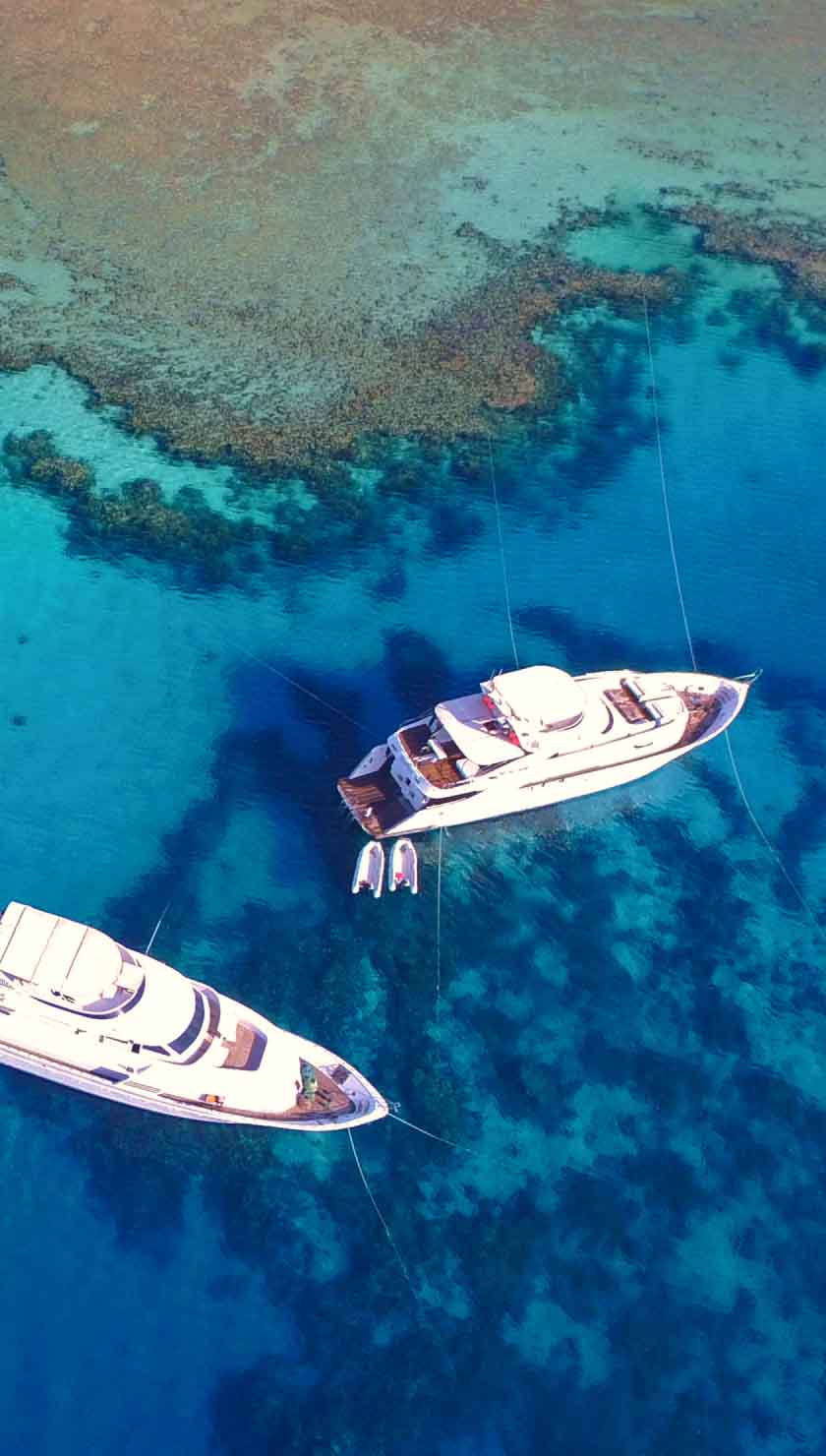Liveaboard Diving in North Twin Plateau
What To Expect On a North Twin Plateau Liveaboard
Liveaboards to North Twin Plateau means divers will get to explore dozens of large, widely scattered granite boulders, which rest on a rocky plateau. Liveaboard diving at North Twin Plateau offers deep diving with a depth range of 15 meters that drops beyond 40 meters in places and it’s is an expansive dive site. Because it's deep and subject to currents, it's not really a dive site for beginners. Visibility is generally excellent averaging 20m but often more, and this dive area is accessed by a range of Myanmar liveaboards.
Your North Twin Plateau liveaboard will sail 67 nautical miles northwest of Kawthaung and 12 miles north of South Twin Island, to where a series of sloping rocky ridges arise. North Twin Island is a tree-covered granite island which has underwater topography similar to many Similan Islands dive sites. 1 kilometer to the northwest of the island, a separate dive site North Twin Plateau is to be found. This plateau is in turn surrounded by a gradually sloping sandy bottom, resulting in topography reminiscent of the western Similan Islands. The best strategy to dive the North Twin Plateau is to start at the deeper edges and work inward, making an effort to cover some distance rather than linger at any one place. Surrounded as it is by open waters, this site attracts a wide range of mid-water predators. Marine life is healthy and abundant, yet tends to be scattered over a fairly large area.
What You Can See at North Twin Plateau
On your North Twin Plateau liveaboard, you will dive the southwest of the island, starting at 5m below the surface, and the North Twin Pinnacle drops to 35m. In shallower areas fimbriated and white-eyed moray eels are common as are octopus and cuttlefish. Purple soft coral and encrusting sponges cover large boulders. And you’ll see long spiny sea urchins and a few anemones cling to the rocks as do sea whips, feather stars, flower corals and gorgonian sea fans, where Seahorses and ornate ghost pipefish can be spotted.
Around the rocks swim emperor angelfish, bicolor parrotfish, grouper, and wrasse. Titan triggerfish and harlequin sweetlips can be seen as well as solitary clown triggerfish. Also present are schools of bannerfish and similar-looking Moorish idols. Lionfish and bearded scorpionfish are abundant.
Local inhabitants include batfish and pelagic species patrolling the open water, such as bluefin tuna and great barracuda. Take a good look under the overhangs for nurse sharks hidden underneath.
Sandbar sharks, easily distinguished from other species by their tall dorsal fins have reportedly been seen here.
While taking in more scenery diving to the reefs outer perimeter to encounter its inhabits, various shark species, including leopard shark, grey reef shark, whitetip reef shark, and occasionally a bull shark.
From time to time Manta and eagle rays use the cleaning station services here. Many of the deeper areas are populated with dense forests of orange fan corals and soft corals sprout from rocky crevices at moderate depths.
Getting To North Twin Plateau
Getting to North Twin Plateau is best from a Myanmar liveaboard departing from Phuket, Khao Lak, and Ranong in Thailand.
Direct flights can be booked with Bangkok Airways from Bangkok to Ranong, located on the Thai side of the Myanmar border. Then take a taxi from Ranong Airport to the port of departure.
Yangon International Airport is the main hub for domestic flights and local airlines include Air Bagan and Myanmar National Airlines. You will find it cheaper and easier to book domestic flights via agencies once you are in Myanmar. As there are no international car rental agencies available, most travel agents in Yangon, Mandalay, and Bagan, and also guesthouses and hotels elsewhere can arrange cars and drivers.











